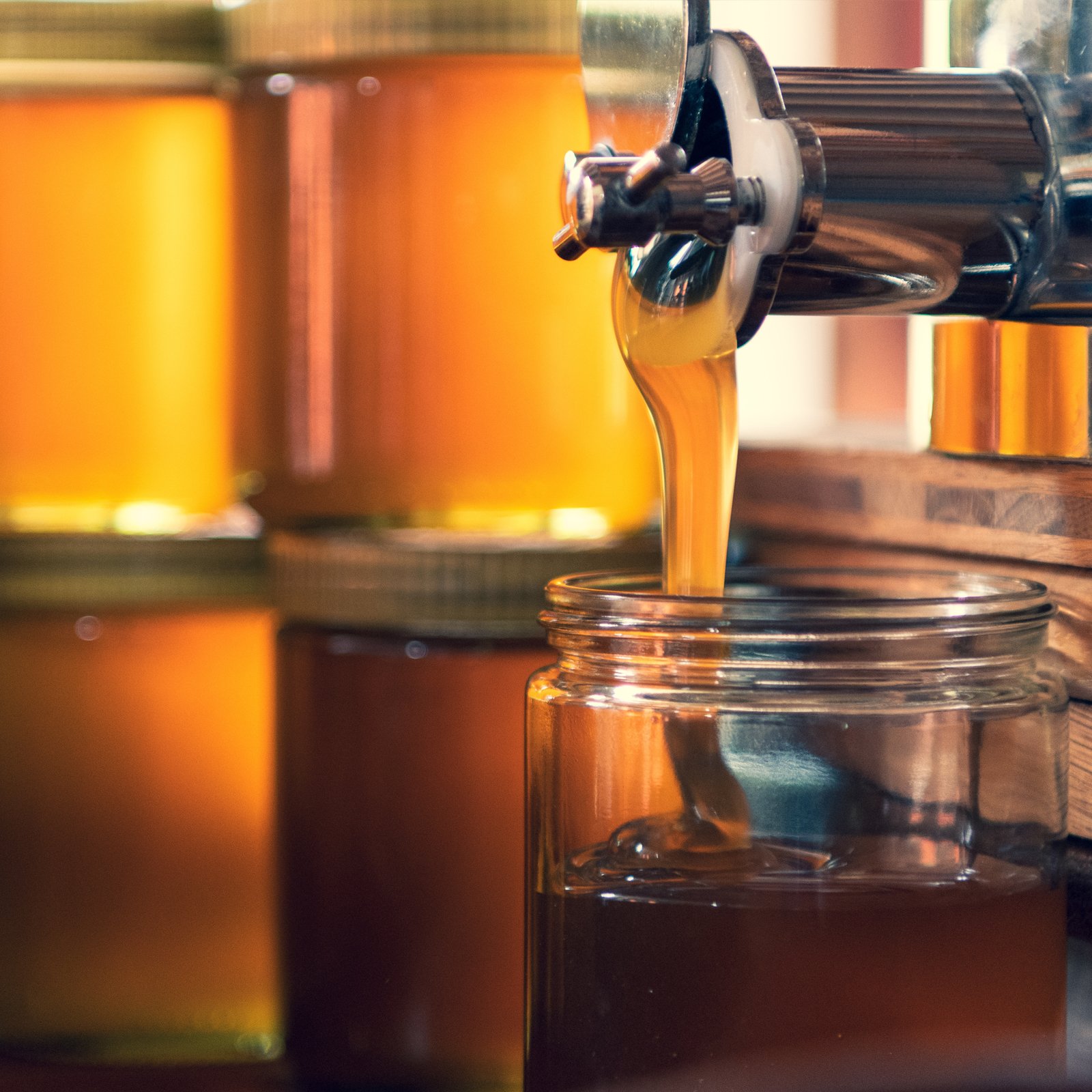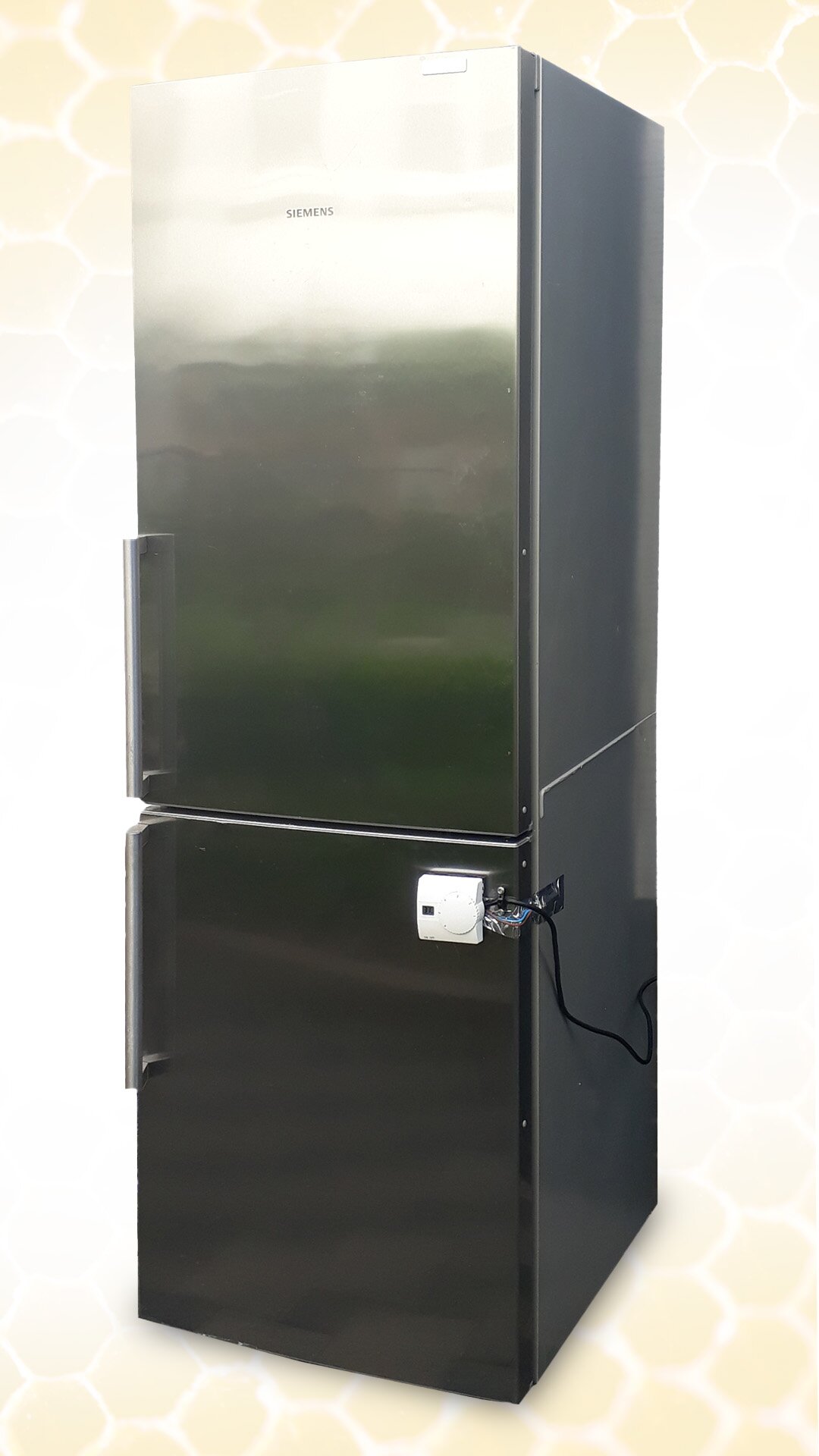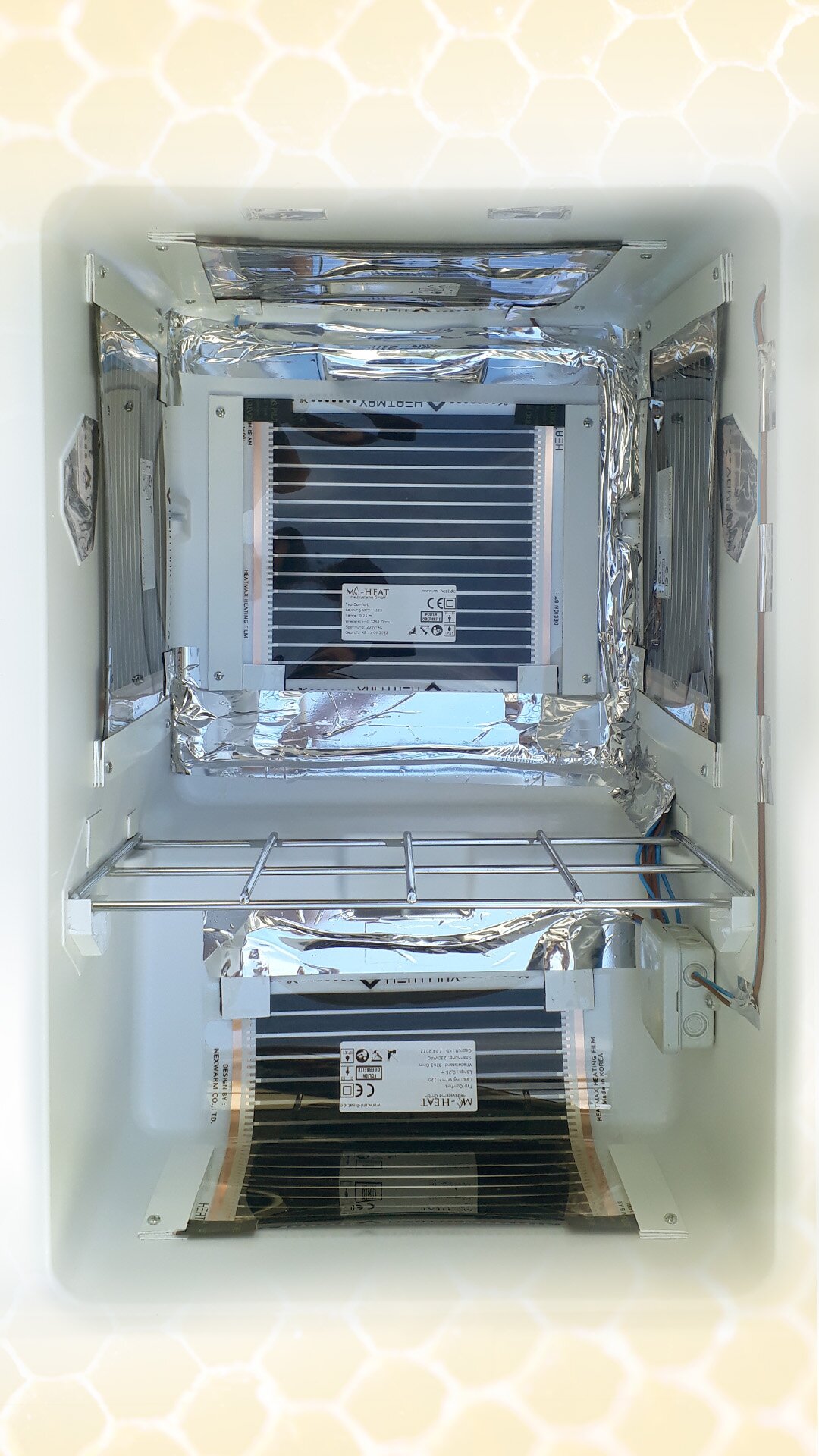Do you still have questions? We will be happy to help you.
*Source: https://deutscherimkerbund.de/
Honey is usually harvested 2-3 times a year. The first harvest, the so-called early harvest, usually takes place during the month of May. The last harvest usually takes place at the end of July or beginning of August.
If the honey is not directly filled into jars, it is often stored in food-approved buckets or so-called hobbocks (barrel- or canister-like containers). During storage, however, the honey often solidifies. This natural process is also called "candying".
As soon as the stored honey is to be bottled, it must be made flowable again without any loss of quality. To do this, the storage container is heated as slowly and evenly as possible. Temperatures of 35 to 38 °C over a period of 24 to 48 hours are sufficient. The exact period always depends on the size of the container.
Heating to temperatures above 40 °C must be avoided at all costs, as this damages the honey and increases the HMF content. According to the guidelines of the D.I.B. (German Beekeepers' Association), a maximum of 15 milligrams of HMF content is permitted in one kilogram of honey. The Honey Ordinance (HonigV) allows a value of 40 milligrams per kilogram. HMF values of over 40 milligrams per kilogram are considered to reduce the quality of edible honey, as they indicate storage or heat damage. *


For the professional filling of honey, there are so-called thawing cabinets on the market. These heat the honey to the required liquid level in a time- and temperature-controlled manner. However, since the purchase price is around 1000 EUR or even considerably more, hobby beekeepers are looking for suitable alternatives.
A water bath is often used to re-liquefy the candied honey. However, this requires a lot of attention and a good thermometer. In addition, care must be taken that the container used is absolutely airtight. This is because honey attracts water and water vapour.
A now very popular alternative, however, is a homemade thawing cabinet based on a disused refrigerator. These can be obtained cheaply second-hand and the good insulation keeps not only cold but also heat perfectly inside the fridge. A few pieces of Mi-Heat carbon heating film with an output of 220W/m² and a thermostat with a remote sensor are ideal for heating the interior. Ideally, both side walls, the back wall and the ceiling and floor should be covered with heating foil to ensure even heating from all directions.
We recommend mounting the thermostat on the outside of the refrigerator so that the set and ACTUAL temperatures can always be read from the outside. The remote sensor for temperature measurement is led into the interior of the refrigerator and fixed there, e.g. to a free surface or the grille. In this way, a separate thawing cabinet with precise control can be realised with little effort and low material costs.


In the upper area, the frames can be stored. Below, the honey is liquefied at a temperature of 35-38°C.

The distribution of the Mi-Heat 220W/m² carbon heating films ensures even heat distribution.
SAS816FHL-AP
Thermostat surface mount
Comfort heating film
220Watt/m² 30cm wide
Connection set for
Mi-Heat heating elements
WAGO terminal block
2pcs / 1x pair
Do you still have questions? We will be happy to help you.
*Source: https://deutscherimkerbund.de/